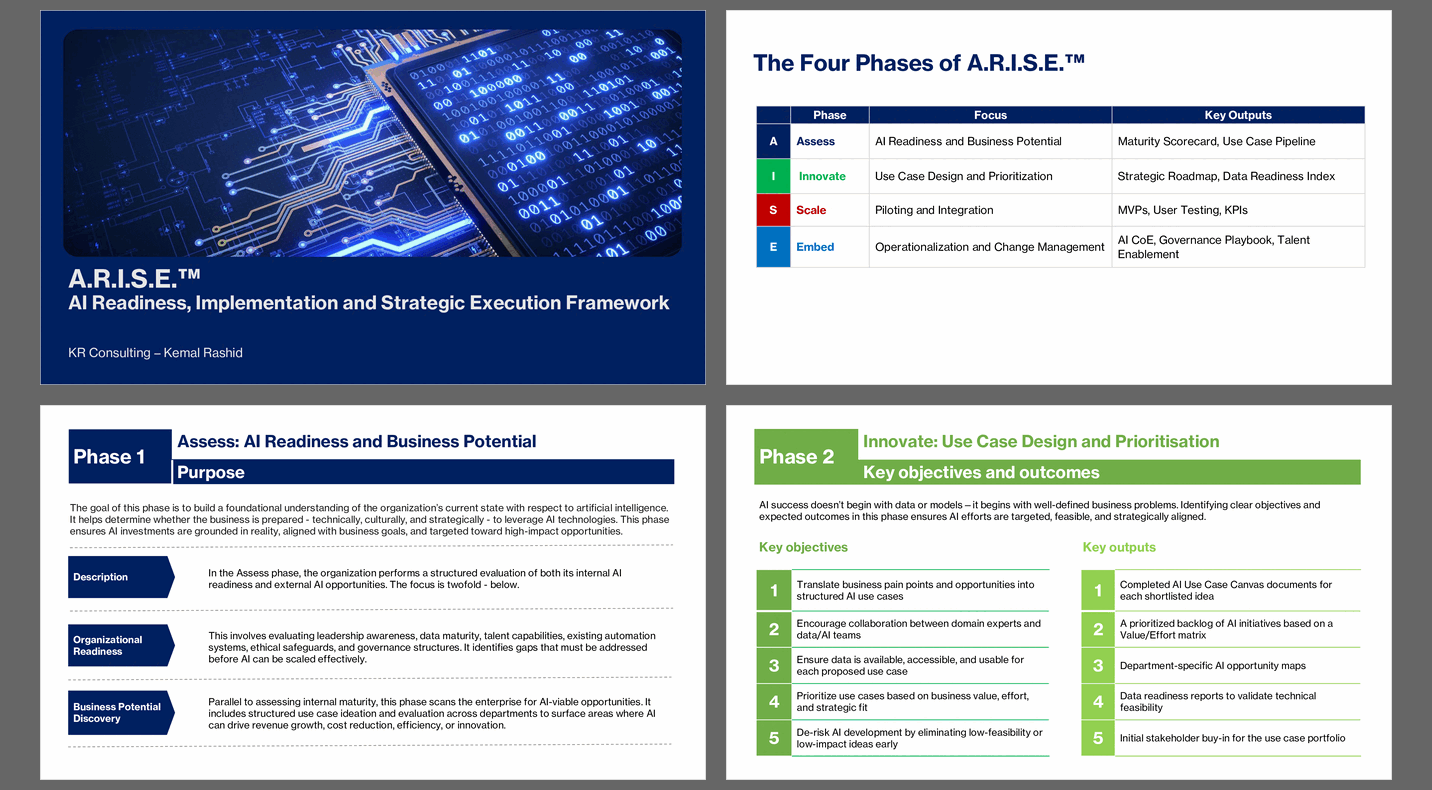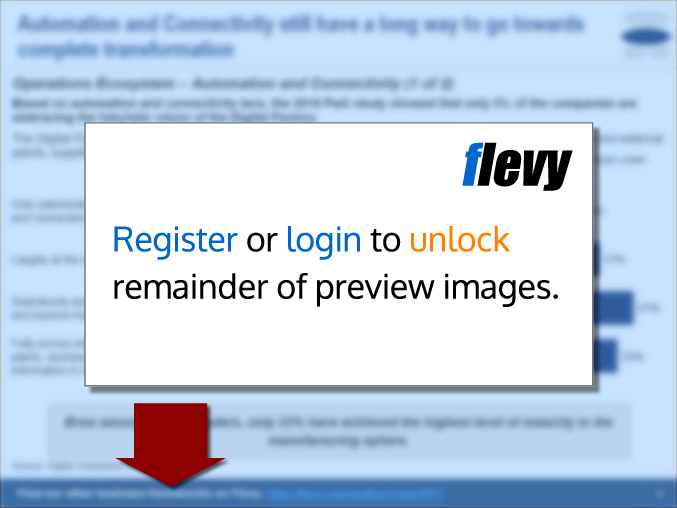AI Readiness, Implementation and Strategic Execution - ARISE (PowerPoint PPTX Slide Deck)
PowerPoint (PPTX) 71 Slides
BENEFITS OF THIS POWERPOINT DOCUMENT
- Immediate Clarity and Direction - A.R.I.S.E. removes uncertainty by providing a clear, structured path from readiness assessment to implementation, so leaders know exactly where they are and what to do next.
- Accelerated Decision-Making and Execution - With pre-built tools, templates, and step-by-step guidance, the framework enables faster alignment, informed decisions, and rapid movement from strategy to action.
- Reduced Risk and Faster ROI - By avoiding guesswork and common pitfalls, the framework de-risks your AI journey and helps deliver early wins, ensuring time, resources, and investment are focused on what works.
DIGITAL TRANSFORMATION PPT DESCRIPTION
Artificial Intelligence (AI) is no longer a future concept – it's a present-day business imperative. AI is transforming how organizations operate, compete, and create value. Yet, with its rapid evolution, many enterprises struggle to keep pace. The A.R.I.S.E. Framework is a proven, practical methodology that helps organizations bridge the gap between AI ambition and execution, enabling them to move from uncertainty to action, from experimentation to scale.
Despite the hype, organizations across industries still face serious doubts, risks, and decision paralysis when it comes to AI:
• Should we invest in AI now or wait?
• Where can AI create value in our business?
• Are we even ready for AI?
• Are our pilots failing to scale or deliver ROI?
• Is our data mature enough to support AI?
• Is there internal scepticism or fear around AI adoption?
• How do we build AI responsibly and sustainably?
• How do we avoid fragmented initiatives that cause AI fatigue?
If you're entering the AI journey with guesswork, misaligned expectations, or lack of structure—this framework is built for you.
This PowerPoint (PPT) presentation contains the full A.R.I.S.E. Framework, a four-phase model designed to guide organizations through AI readiness, implementation, and strategic execution. It includes:
• Structured methodologies for each phase
• Practical tools, templates, and models
• Use case prioritization techniques
• Readiness assessment tools
• Change and stakeholder engagement guidance
• Tips for embedding AI into business-as-usual operations
• Built-in focus on responsible and ethical AI
The phases are:
• Assess – AI Readiness and Business Potential – Maturity Scorecard, Use Case Pipeline
• Innovate – Use Case Design and Prioritization – Strategic Roadmap, Data Readiness Index
• Scale – Piloting and Integration – MVPs, User Testing, KPIs
• Embed – Operationalization and Change Management – AI CoE, Governance Playbook, Talent Enablement
The A.R.I.S.E. Framework saves you time, eliminates guesswork, and enables clear, confident decision-making around AI. Whether you're unsure about starting, struggling to scale, or aligning AI with business goals, this framework gives you a roadmap to:
• Make objective decisions about where and how to use AI
• Identify and prioritize the most impactful AI opportunities
• Build AI capabilities responsibly and sustainably
• Avoid costly missteps and fragmented pilot failures
• Align AI investments with business strategy
• Accelerate implementation with tools and templates built for real-world application
Successful AI transformation begins with clarity—and this framework delivers it.
PowerPoint Presentation (PPT), AI Strategy Framework Presentation, AI Readiness & Implementation Slide Deck, Executive AI Transformation Toolkit (PPT Format), AI Deployment Roadmap PowerPoint, Enterprise AI Framework (Downloadable PPT)
Got a question about the product? Email us at support@flevy.com or ask the author directly by using the "Ask the Author a Question" form. If you cannot view the preview above this document description, go here to view the large preview instead.
Source: Best Practices in Digital Transformation, Artificial Intelligence PowerPoint Slides: AI Readiness, Implementation and Strategic Execution - ARISE PowerPoint (PPTX) Presentation Slide Deck, KR Consulting









